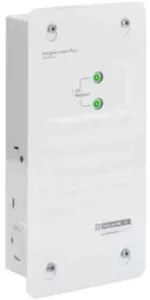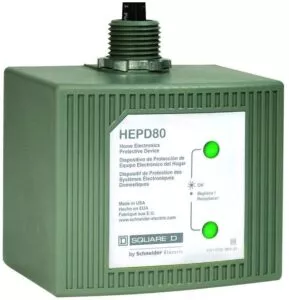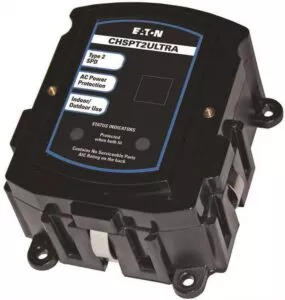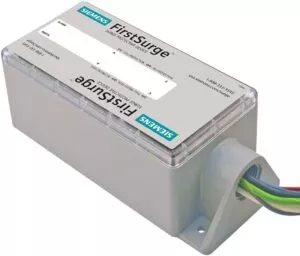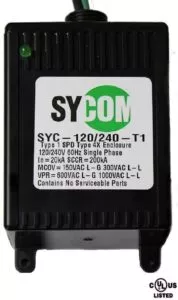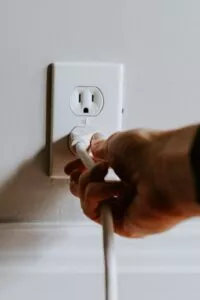
The Best Whole House Surge Protector in Canada
When you need protection against lightning strikes, power surges, and damage that can come with it for your entire home – Look no further than a whole house surge protector.
With everyone being at home more often these days and with more electronics plugged in than ever, it’s important to protect your appliances and computers from electrical surges so that they last a long time, and nothing gets damaged.
Our comparisons below can help you choose which is best for your home. Read on to check our list of the best whole house surge protectors in Canada, including how they compare and their advantages and disadvantages.
Our top picks
How to choose a whole house surge protector
When looking for a whole house surge protector there are a few details to keep in mind:
Your property’s outlet voltage – Many homes in North America are equipped with 120-volt power outlets. Chances are that an 80kA-Rated surge protector will suit your needs within Canada.
Make sure your SPD is UL Certified – It’s important to make sure that your surge protector is certified so that you don’t run into any issues down the line due to faulty equipment.
Warranty / Value – With something like a whole house surge protector, you’ll want to make sure that there’s a warranty and that the value and price of your protector is both quality and a reasonable cost.
Maximum continuous operating voltage – MCOV is important and should never be lower than 115% of the system’s nominal voltage.
Why trust us
Choosing a whole house surge protector is an important factor to consider for your home. Our team spent over 15 hours researching which whole house surge protector is best for budget, quality and ease of installation.
Square Schneider Electric Surgebreaker
Square Schneider Electric Surgebreaker
When surge protection is installed at the electrical panel, it helps protect all of your home devices – including the ones that aren’t plugged into a power strip. The Electric Surgebreaker can make sure that nothing gets destroyed.
Easy to install and saving space, it’s a wonderful whole house surge protection to consider in your home. It protects everything from home electrical wiring, expensive LED lights, computers, game consoles, and all the way to appliances like washers/dryers, and fridges.
Surges come from multiple sources and range from immediate loss of electronics with larger strikes, or simply far less life expectancy of your electronics and appliances from dealing with surges. A protector like the Square Schneider Surgerbreaker is fantastic in preventing issues, while still remaining easy to install and acquire.
The only thing to be aware of is that you will need to keep several extra parts for the breaker, once it gets tripped by a large surge it can only absorb the one and will need to be replaced. That said, you only need to replace the one part and not the whole installation – which saves you money and time.
Pros
- Easy to install.
- Saves space.
Cons
- No reset button; part needs to be replaced after a big surge.
Schneider Electric HEPD80C Surge Protector
If you’re looking for an affordable whole house surge protector, the Schneider HEPD80C has you covered, all in one small package.
Compatible with any electrical panel, make or model, this 80,000A surge current rated protector is an easy choice. With an LED that indicates operational status, so you don’t have to guess whether or not the surge has blown, it’s a great time saver.
HEPDS provide support and safety for sensitive electronics, and work to reduce surges that can overwhelm power strip plugs and damage any connected household electronics like your TV, computers, or game consoles.
They also provide protection to your larger but still sensitive electronic appliances such as dishwashers, fridges, stoves, washer/dryers – You name it. It only takes one large surge to destroy your electronics so make sure they’re safe.
Pros
- Compatible with any brand of electrical panel.
Cons
- Installation requires a certain connection.
Eaton Ultimate Surge Protection
Eaton is a top choice for whole house surge protectors, saving your electronics and appliances from surges.
If you’re familiar with breaker panels, you can install this small box yourself within an hour or less, though it is recommended that you have a proper electrician do so just to make sure that everything is set correctly. A fair number of reviews on Amazon have said that the white wire was rather short for their panels and needed to be adjusted accordingly. Not a problem, but rather just as a known issue.
It does require a 50A Pole Breaker that you may have to purchase separately if you don’t already have one, which isn’t uncommon with whole house surge protectors. Just be sure to have space in your breaker panel, and if not you should opt for a smaller protector for you.
There are two LEDs that indicate it’s working or if the fuse has been blown, in which case it just needs to be replaced and you can go on with being protected from electrical surges.
Pros
- Decent install.
- Indicator LEDs.
Cons
- Wires may be too short.
- Needs to be compatible with your set-up.
Siemens Whole House Surge Protection
Installed right at the load center of your electrical panel, the Siemens Whole House surge protector saves your electronics before they even have a chance of being harmed, with surges being stopped before they get there.
FirstSurge offers three different grades of protection that can actually compensate for the storm activity in your area, so if you live in a stormier area of the country and are worried about power surges, you’ll want to make sure that you have the correct one for your needs.
Installation is fairly simple, though an electrician would be able to safely and properly do so for you. When FirstSurge wears out, its three-stage notification diagnostic will alert you immediately that it needs to be replaced. It’s first in its class compared to other surge protectors that rely on LED lights or noises to warn you.
Pros
- Compatible with any brand and breaker.
Cons
- Large size.
How we picked the best surge protectors
For this particular buying guide, we reviewed and read through peer-reviewed articles to choose the best whole house surge protector for your home and family.
In order to choose the best for all budgets and home types, we went through available surge protectors within Canada that are certified and readily available for purchase.
Frequently asked questions about surge protectors
What is a whole house surge protector?
A whole house surge protector is the best defense against power surges of any size. They are generally connected to a home’s electrical box, but in a more convenient location for easy access. Modern surge protectors use metal oxide varistors to shunt power surges.
What is a power surge?
Power surges happen whenever the flow of power is interrupted and then restarted, or when something sends electricity flowing back into the system. They can range from five or ten volts from something like turning on your hair dryer, up to thousands if lightning strikes a transformer.
How does a whole house surge protector work?
In simple terms it has a filter that allows all regular/good electricity in and prevents all irregular electricity from having an impact on your utilities. By filtering out what’s good and harmful, it protects all of your appliances and computers from burning out or in some cases, exploding.
What’s the average cost of a whole house surge protector?
It will all depend on what you get and how you have it installed, but generally around $500, and pay for the electricians time.
Is a whole house surge protector worth it?
Yes, they are a good idea. Not only do they help with keeping your appliances and computers living a good life, but they protect your home against potential threats like fire or explosions depending on the device and surge.
Does a whole house surge protector require installation?
Yes. Unless you’re an electrician yourself that knows what to look for and access, a whole house surge protector needs to be installed.
What are the cons of whole house surge protectors?
Besides monetary expense and cost for installation, there are no cons to protecting your home.
Does everyone need a whole house surge protector?
If you own your own home, yes it should be something to strongly consider if one isn’t installed already. You never know when lightning or any interference can wreck your appliances, computers, or even the wiring in your house.
What are the types of whole house surge protectors?
There are three types of whole house surge protectors: One is a Type 1 SPD that is the first line of defense from any surges. Type 2 SPD is installed at your breaker panel, and Type 3 SPD’s are installed at ‘points of use’ around your home such as plugging in a surge protector power bar.
Read more

The Best Automatic Soap Dispensers in Canada
Hands-free soap dispensers are everywhere we go these days. Here’s our full guide.

The Best No-Touch Door Keychains
Contactless door openers can help you avoid highly touched surfaces.
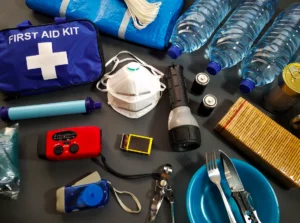
The Best Emergency Preparedness Supplies
When it comes to being prepared for an apocalyptic event, having emergency preparedness supplies can make a difference.
